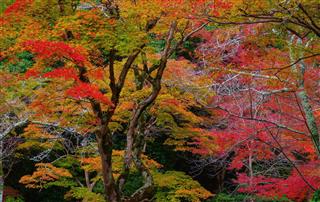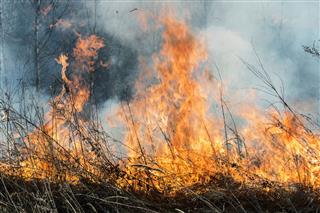
What is the Carbon cycle? Why is it important? How does it work? In this article there will be a simple explanation of the above questions for kids. Read on to find out the answers.
Before we come to the Carbon cycle, we have to understand why Carbon is so important in the first place. We all need energy to survive and do things. Where does this energy come from? Our main source of energy is the Sun. But did you know, that other than plants, algae and a few types of bacteria, no other living organism can use sunlight directly as a source of energy? Other than these organisms, no other organisms can convert the energy obtained from the Sun into the nutrients required for their survival. So, all of us have to depend on plants for our nutrition and survival, and plants, in turn, require Carbon-dioxide along with sunlight, to make their own nutrition. So without Carbon-dioxide, plants wouldn’t make food, and we would have no direct source of energy for our own survival. Ergo, we would all perish! So, thanks to Carbon and the compounds that it forms, we are here to understand the Carbon cycle.
Significance of Carbon
Carbon is extremely important for the existence of almost all the organic and inorganic things present on the earth. It is the basic building block of all life forms, and is crucial for their survival. Here are a few reasons why Carbon is so priceless:
- Carbon is the base of all organic compounds. It can form millions of stable and diverse compounds, ranging from simple to extremely complex.
- Organic compounds are an essential part of the cells of all living organisms. Everything – carbohydrates, sugars, our DNA, our cells, all have Carbon.
- By weight, around 18% of the human body is Carbon!
- Carbon is one of the most stable, versatile and abundant elements on Earth!
- Carbon is necessary for many human activities, e.g., in industries, for generating energy, combustion in automobiles, etc.
- Carbon also forms Carbon dioxide, which is a greenhouse gas. Without this (and other greenhouse gasses in small quantities), the Earth would freeze!
There are many, many reasons why Carbon is really important. It is an intrinsic part of life on Earth, and its importance cannot be undermined. Diamonds are also a form of Carbon, as is Coal! Humans and animals need Carbon for their metabolism, in the form of carbohydrates. Carbon is also the key ingredient of fossil fuels, petroleum, is used in Carbon-dating, etc. One can go on and on about the uses and benefits of this important element. As such, it is important for us to know how Carbon present in various forms in the atmosphere, biosphere and lithosphere is exchanged between them and used.
Explanation of the Carbon Cycle
The Carbon cycle implies the exchange of Carbon between the various organic and inorganic elements in the atmosphere and the biosphere. The elements which release Carbon in the atmosphere are called the sources, while those that absorb Carbon from the atmosphere are called the sinks.
Carbon Sources
Carbon sources refers to all the elements – organic or inorganic, which release Carbon in some form into the atmosphere. Here are the sources:
- Volcanic eruptions
- Respiration of animals and humans
- Decay of dead matter
- Combustion of fossil fuels
- Natural processes like conversion of limestone to lime, metamorphism of rocks, etc.
- Warm water bodies
Carbon Sinks
Carbon sources refers to all the elements – organic or inorganic, which release Carbon in some form into the atmosphere. Here are the sources:
- Plants, algae, and a few strains of bacteria
- Cold water bodies
- Landfills (artificial sink)
Carbon Reservoirs
Reservoirs of Carbon are those which store this element in various forms, for small or really long periods of time. They are:
- The Earth’s atmosphere, which contains copious amount of CO2.
- Organic elements like rocks, soil, sediments, limestone and coal deposits, etc.
- Oceans which also contain a lot of dissolved Carbon in various forms as well in the form of fossil fuels.
- Volcanic eruptions and geothermal activities also release a lot of Carbon into the atmosphere.
The Carbon Cycle
Here is how the cycle works:
- Carbon dioxide from the atmosphere is used up by plants along with sunlight for the process of photosynthesis. This is the process which breaks down Carbon dioxide into compounds that can be used as nutrition by the plants. In this process, plants release Oxygen as a by product.
- Animals and humans consume these plants, and thus the Carbon is transferred from the plants to animals and humans.
- From animals and humans, the Carbon is sent back to the atmosphere through the process of respiration.
- Other than respiration, when plants, animals or humans die, their remains decay and decompose, and Carbon is transferred to the Earth when this happens. When the remains have been around for thousands of years, they become fossil fuels, and these are huge reservoirs of Carbon.
- Burning of wood, fossil fuels, combustion, etc., are processes which transfer Carbon back to the atmosphere. This is released in the form of Carbon dioxide.
- Oceans and other huge water bodies which have cool water on the surface also absorb some Carbon from the atmosphere. But oceans exhibit dual behavior. When the surface water is cooler (as may happen in cold regions, near the poles) Carbon is absorbed into the water, whereas when the surface water is warm (near tropical regions), Carbon is released into the atmosphere, from where the plants will again absorb it for photosynthesis, and the cycle repeats.
As is clear from the discussion so far, there is a huge imbalance between the number of sources and sinks of Carbon, resulting in too much Carbon being released into the atmosphere but not being absorbed from it. Carbon is a greenhouse gas, meaning it traps the heat from the Sun, and stops it from escaping into space. This makes the Earth warmer, causing global warming. More the Carbon in the atmosphere, more will the heat be trapped and the temperature will rise. Hence, we need to plant more trees, and avoid deforestation as much as possible, so that there is more sinking of Carbon, and the temperature of our planet doesn’t rise further.


